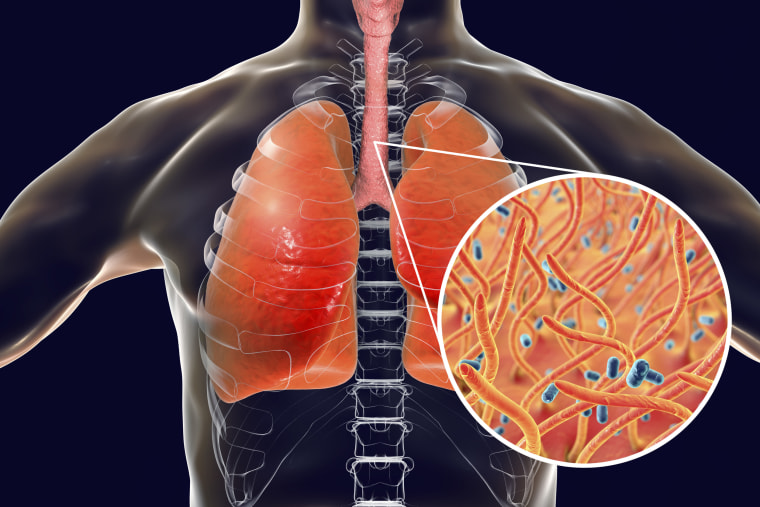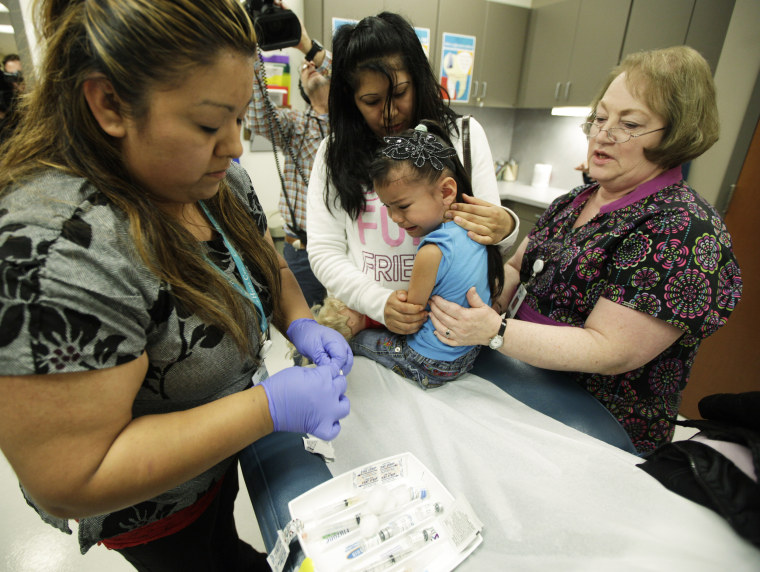The vaccine for whooping cough doesn’t work as well as it used to, and new research suggests it’s largely because the bacteria behind the disease has mutated.
Researchers at the Centers for Disease Control and Prevention analyzed lab samples from patients with whooping cough between 2000 and 2013 and found Bordetella pertussis, which causes whooping cough, has gone through genetic changes over time.
That means the current vaccine is not a perfect match to the bacteria. Researchers hope the new data published Wednesday in the journal “Emerging Infectious Diseases” will help change that.
“The genomic data we provide will aid open research toward improved vaccine development and disease control strategies,” the CDC authors wrote in their report.
Infectious disease experts agree.
“The pertussis vaccine is not optimal,” said Dr. William Schaffner, professor of preventive medicine at Vanderbilt University Medical Center.
“We’re making the best use of the vaccine, while we’re frantically doing research to make a better one,” said Schaffner. But a new vaccine for whooping cough is nowhere near ready, he said.
How contagious is whooping cough?
Anyone can get whooping cough, but newborns are most vulnerable.
Babies and children currently receive a vaccine called DTaP. It’s a shot that helps protect against three diseases: pertussis, diphtheria and tetanus. Studies have shown the vaccine is safe and works very well against diphtheria and tetanus, protecting nearly everyone who gets it for a decade.
But the DTaP is less effective in preventing whooping cough. Nearly all children who receive all five recommended doses are protected for one year. After that, immunity wanes. Five years after the last dose, the CDC says the DTaP protects only about 70 percent of children from pertussis.
The CDC recommends booster shots for preteens, teenagers and adults every 10 years.
Babies are not eligible for the DTaP vaccine until they’re 2 months old. The CDC advises women to get a booster shot with every pregnancy so babies are born with some protection against whooping cough until they’re old enough to get the vaccine themselves.
“The most protective thing you can do is have a pregnant mom get the vaccine. It is the number one way to protect the baby,” said pediatrician Dr. Wendy Sue Swanson, Seattle Children’s Hospital.
Paradoxically, many babies with whooping cough may not cough at all. They may simply stop breathing, leading to dangerous and life-threatening situations.
About half of babies under age 1 with pertussis are hospitalized, often because they have trouble breathing, according to the CDC. Of those hospitalized, a quarter develop pneumonia. One out of 100 will die.
The new report comes amid ongoing outbreaks of another infectious disease: measles. The CDC has confirmed 228 cases of measles since the beginning of 2019, with infections in 12 states. The measles virus has spread quickly in communities with people who have not received the measles vaccine, called MMR.
Whooping cough is different. Infectious disease experts attribute the rise in pertussis cases in part to better diagnostic testing, but also to waning immunity. The most recent peak in pertussis cases in the U.S. was in 2012, when states reported 48,277 cases to the CDC.
No ordinary cough
Pertussis is no ordinary cough. The intense hacking associated with the infection inspired its two nicknames: “cough of 100 days” for its propensity to linger for weeks, and “whooping cough” for the sound of patients urgently gasping for air after violent coughing fits.

The episodes can be so severe that patients are unable to eat or sleep normally. Some patients have broken their ribs while coughing. Schaffner said he once treated an adult with pertussis who was injured after blacking out and falling during a particularly severe coughing jag.
How is whooping cough spread?
Whooping cough is extremely contagious. The disease spreads through coughing, sneezing or simply spending time in very close contact with another person.
Doctors recommend basic hygiene practices to stop pertussis from spreading:
- Cover your mouth and nose with a tissue or upper sleeve when sneezing and coughing.
- Make sure to throw used tissues in the trash.
- Wash hands often with soap and water for at least 20 seconds.
Pediatricians say whooping cough often starts as a typical cold with a runny nose. The cough may not develop until several weeks later.
“Whooping cough is insidious,” said Swanson. “You don’t know you have it right away.”
She says parents may not take children to a doctor until they’re coughing so hard that they’re vomiting, which means the child may have been unknowingly spreading the disease for several weeks.
“If you have whooping cough, you should not be around others, particularly pregnant women and infants,” said Swanson.



